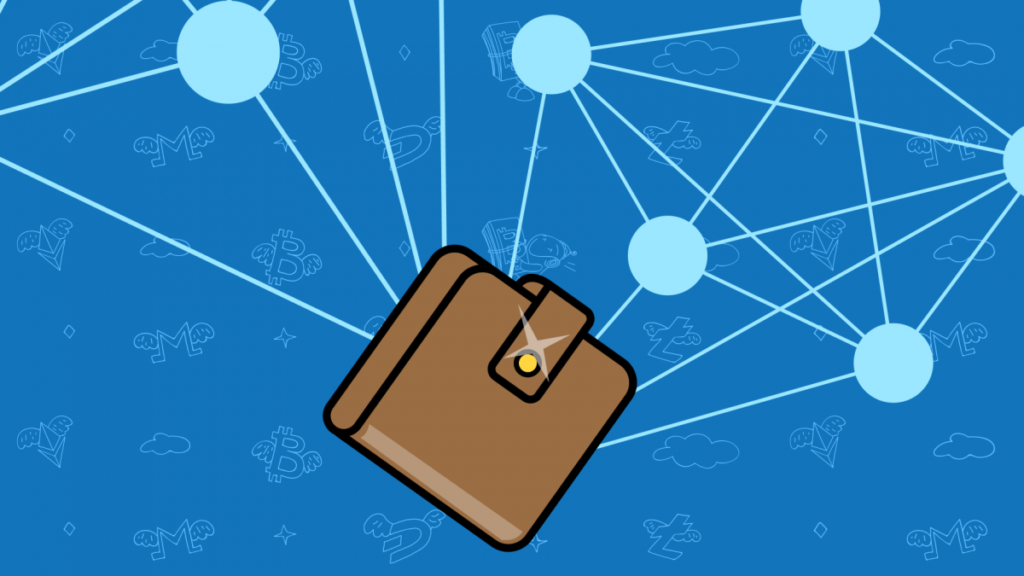A cryptocurrency wallet is a software program that stores private and public keys and interacts with various blockchain networks to enable users to send and receive digital currency and monitor their balance. Cryptocurrency wallets can be divided into two main categories: hot wallets and cold wallets. Hot wallets are connected to the internet and are typically used for smaller amounts of cryptocurrency that are more frequently accessed, while cold wallets are offline and used for larger amounts of cryptocurrency that are held for longer periods of time.
Cryptocurrency wallets are important because they allow users to securely store and manage their digital assets. Without a wallet, it is not possible to hold or transact in cryptocurrency. Additionally, cryptocurrency wallets provide a layer of security that is critical in an industry that is susceptible to hacking and fraud. By storing private keys in a secure and encrypted way, users can protect their digital assets from theft or loss.
Overall, cryptocurrency wallets are an essential tool for anyone who wants to hold or transact in digital assets. They provide a secure and convenient way to manage cryptocurrencies, and as the industry continues to evolve, wallets are likely to play an even more important role in the ecosystem.

There are several types of cryptocurrency wallets, including:
- Hardware wallets: These are physical devices that store your private keys offline, providing a high level of security. Some popular examples include Ledger and Trezor.
- Software wallets: These are applications that you install on your computer or mobile device to store your private keys. Examples include Electrum, Exodus, and MyEtherWallet.
- Web wallets: These are online wallets that you access through a web browser. They are convenient, but can be less secure than other types of wallets since your private keys are stored on a remote server. Examples include Coinbase and Blockchain.info.
- Paper wallets: These are physical documents that contain your public and private keys, usually in the form of QR codes. They are one of the most secure options since they are not connected to the internet, but can be difficult to use.
- Brain wallets: These are wallets where you remember your private key and don’t store it anywhere else. While they are convenient, they can be less secure because your key could be vulnerable to being hacked or forgotten.
It’s important to note that each type of wallet has its own pros and cons, and it’s important to choose the right one based on your needs and level of security.

Here are the steps involved in setting up a cryptocurrency wallet:
- Research wallet providers: Before choosing a wallet provider, it’s important to research and compare various options to find one that best suits your needs. Look for wallets that are reputable, secure, and support the specific cryptocurrency you plan to store.
- Choose a wallet provider: Once you have researched and compared different wallet providers, choose the one that you feel is the best fit for you. Some popular options include Coinbase, Exodus, MyEtherWallet, and Ledger.
- Create a new wallet: After choosing a wallet provider, you will need to create a new wallet. This usually involves filling out a sign-up form and verifying your identity. Make sure to choose a strong password and enable two-factor authentication for added security.
- Fund your wallet: Once you have created your wallet, you can fund it with cryptocurrency by either purchasing it from an exchange or receiving it from another wallet. Follow the instructions provided by your wallet provider to deposit funds into your new wallet.
- Store your recovery phrase: Most wallet providers will give you a recovery phrase or seed phrase that can be used to recover your wallet in case you lose your password or your device. It’s important to store this phrase in a safe place and never share it with anyone.
- Start using your wallet: After setting up your wallet and funding it with cryptocurrency, you can start using it to send and receive transactions. Be sure to follow best practices for security, such as only sending cryptocurrency to trusted recipients and keeping your private keys secure.

And here are some factors to consider when choosing a cryptocurrency wallet:
- Security: Security should be your top priority when choosing a wallet. Make sure the wallet you choose has robust security features such as two-factor authentication, password protection, and encryption. Some wallets even offer hardware wallets that provide an extra layer of security.
- Convenience: Ease of use is also an important factor to consider. Choose a wallet that is user-friendly and easy to navigate, with a simple and intuitive interface.
- Compatibility: Make sure the wallet you choose supports the cryptocurrencies you want to store. Some wallets only support a limited number of cryptocurrencies, so be sure to check before you make your decision.
- Reputation: Do your research and choose a wallet from a reputable provider. Look for reviews and feedback from other users, as well as information about the company’s history and track record.
- Customer support: Check if the wallet provider offers customer support and if they have a good reputation for resolving issues quickly and efficiently.
- Fees: Some wallets charge fees for transactions, so be sure to check the fee structure before you choose a wallet. Look for a wallet with competitive fees that won’t eat into your profits.
- Backup and recovery options: Choose a wallet that offers backup and recovery options in case you lose your private keys or your device. Some wallets allow you to store your recovery phrase offline or on a separate device for added security.
By considering these factors, you can choose a wallet that meets your needs and offers the security and convenience you require for storing and managing your cryptocurrency.





Awesome
No work in country
Amazing 😀
Really need these
It s good
excelente informacion
Such a worth reading article. I got to learn about crypto wallets and how they work.
Good
Será cierto
It s very good
Interesting wallet.
Good news
excelente informacion
Waoo awesome.
Informative
Good